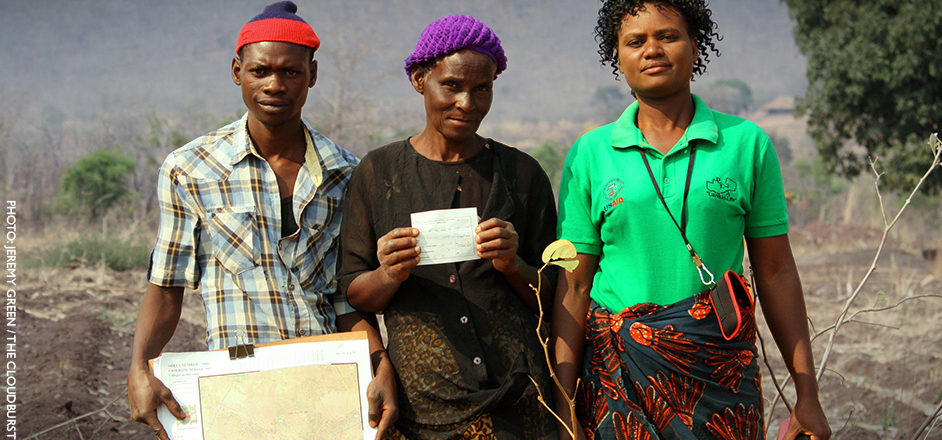Land and resource rights had an increasingly important role in 2015 due to growing evidence and recognition that having clear, secure land rights is an essential component of reducing extreme poverty, eliminating hunger and addressing climate change. That is why we are looking back at five reasons land mattered in 2015.
- Land is included in the Sustainable Development Goals (SDGs) as a target to eradicate poverty, end global hunger and obtain gender equality
The SDGs define global development priorities through 2030. Now, with a land rights indicator in one of the goals, land is formally recognized as a crucial measure of progress on some of our most pressing development issues. - The Girls Count Act of 2015 becomes a law and prioritizes land rights for women and girls
Signed into law by President Obama in 2015, the Girls Count Act calls for support to programs that help secure land rights for women and girls, helping them to obtain a key asset that can lead to greater control over decision-making and positive outcomes on food security, child nutrition, health and education. - Thousands join an open online course on land rights
In September, USAID launched the first-ever Massive Open Online Course (MOOC) on land tenure and property rights. Nearly two thousand participants from over sixty countries— including representatives from donors, governments, civil society, and the private sector—have taken part in the first iteration of the course. This is the first time that a free, shared, global education tool has been developed to help development practitioners and others understand the complex challenges created by insecure land rights–and the evidenced-based global best practices for addressing them. - New mobile open-source technologies are deployed by USAID to help communities map and document their rights and analyze their land.
In many countries, it is prohibitively difficult or expensive for citizens to map and document their land, or to find out what their land can be best used for. New open-source technologies, such as readily available GPS-enabled smartphones and tablets, can help address this problem, and bring the benefits of land mapping and analysis to rural communities. In 2015, we saw a suite of Mobile Applications to Secure Tenure (MAST) launched, in Tanzania, in Kenya and Namibia, and in Zambia. These technologies are opening new doors for transparently and efficiently recording rights, documenting claims, mapping parcels and sharing information and they have the potential to dramatically lower the costs of these services. - 2015: A year of good guidance on responsible investment
In 2015, several organizations issued new guidance designed to reduce risks and increase benefits associated with private sector investments in land. These documents outline best practices related to land tenure due diligence, community consultations, mapping exercises and they provide guidance on how to develop appropriate benefit sharing arrangements. In March, USAID released its Operational Guidelines for Responsible Land-based Investments. The Operational Guidelines provided a strong basis for a tool released in August by the New Alliance on Food Security and Nutrition called the Analytical Framework for Responsible Land-based Agricultural Investments. In June, the Interlaken Group released a guidance tool supporting businesses aiming to respect land and forest rights, and in October, the FAO and OECD followed on with guidance on Responsible Agricultural Supply Chains. Taken together, these documents contribute to an expanding body of best practices for land investments.


